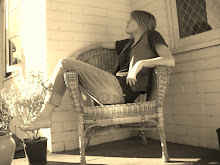Did you know we do not have the freedom to put ourselves in harm way should we so choose? It may seem odd that I think this important, but take this story in the papers today. A Sydney man scales the Sydney Harbour Bridge to draw attention to his plight and raise awareness about the kids who suffer in broken homes when families fall apart. He was arrested and appeared in court on charges of obstructing traffic, climbing/jumping from buildings or other structures and climbing on bridges. The Magistrate then ordered him “not to disrupt the free flow of traffic/people or act in any way that risked the safety of himself or others.” Further, as punishment for his actions, he banned the man from contacting his ex-wife and his children (who he hasn’t seen in months). And as if this wasn’t enough, the Premier of that state then called for not only an increase in security on the bridge but an increase in the severity of criminal charges illegal bridge climbers face.
Are you god-damn kidding me? Where in my tacit agreement to be a good citizen of this country do I forfeit the right to put myself in a dangerous situation if I so wish? Certainly, putting somebody else in harms way is always reprehensible, and no doubt if someone choses to do something so crazy, they should hardly be entitled to free help if they get themselves stuck. Stopping traffic is a little selfish, sure, but criminal? What I think these laws function to do, other than interfere with someones control over their own actions, is to put as many barriers in place to scare protestors, all in the pursuit of the greater good of Civic Order. Chaining yourself to a coal mine at the inconvenience of the multi-million dollar company will see your arse charged and your name ‘black listed’ as a nuisance activist and striking is virtually illegal. Whether or not Random Citizen is allowed to climb a public structure or not is, I suppose, that battle over the use of public space that we see the likes of street artists and skateboarders facing. We the people make up the country and the government. We all, and therefore no one, owns public spaces. But the government, elected by us, then make laws to keep us out of it and tell us what we can and cannot do in it.
I remember once coming across an interesting article on urban geography which told the story of the clearing of the slums in Australian cities last century. To remove slums and riff-raff city streets were redesigned to eliminate small lanes where people would loiter by building wide (shop lined) streets. Thus the city streets were redefined, becoming primarily a space for transit. To bring this tangent back to the present day, this story demonstrates the way we can be punished for undertaking dangerous acts, that we in fact do not have the freedom to act in any way that may bring harm to ourselves or do anything in a public space but walk politely, head down, from A to B.
There are people out there that challenge the way public space is allowed to be used. For example, Parkour, or free running, (I read about a PhD student who proposes urban spaces be redesigned to encourage this kind of play). Reverse graffiti is a process in which street walls have designs ‘cleaned’ into them, challenging notions of illegal graffiti. Flash mobs, in which a group of people assemble suddenly in a public place, are quirky and subtly insubordinate use of the public space. (which often come up against legislation which demands a permit for ‘public events’) This type of creativity in public spaces is, I think, more exciting than charging a man for climbing a bridge.
Subscribe to:
Post Comments (Atom)


No comments:
Post a Comment